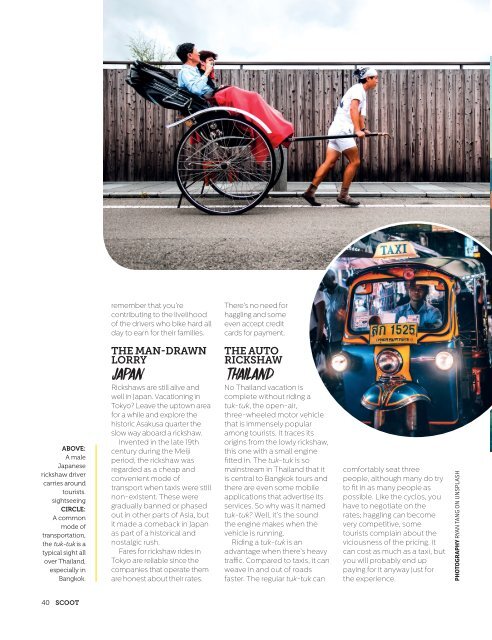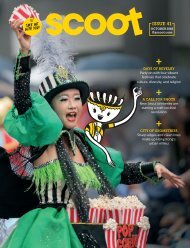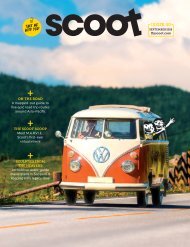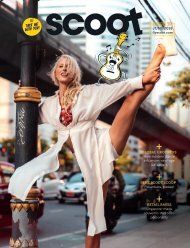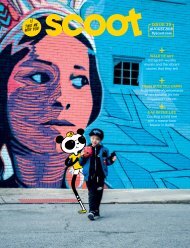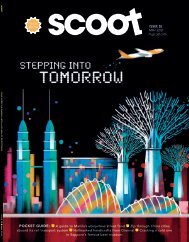July 2018 - Scoot In-flight Magazine
You also want an ePaper? Increase the reach of your titles
YUMPU automatically turns print PDFs into web optimized ePapers that Google loves.
emember that you’re<br />
contributing to the livelihood<br />
of the drivers who bike hard all<br />
day to earn for their families.<br />
There’s no need for<br />
haggling and some<br />
even accept credit<br />
cards for payment.<br />
ABOVE:<br />
A male<br />
Japanese<br />
rickshaw driver<br />
carries around<br />
tourists.<br />
sightseeing<br />
CIRCLE:<br />
A common<br />
mode of<br />
transportation,<br />
the tuk-tuk is a<br />
typical sight all<br />
over Thailand,<br />
especially in<br />
Bangkok.<br />
THE MAN-DRAWN<br />
LORRY<br />
JAPAN<br />
Rickshaws are still alive and<br />
well in Japan. Vacationing in<br />
Tokyo? Leave the uptown area<br />
for a while and explore the<br />
historic Asakusa quarter the<br />
slow way aboard a rickshaw.<br />
<strong>In</strong>vented in the late 19th<br />
century during the Meiji<br />
period, the rickshaw was<br />
regarded as a cheap and<br />
convenient mode of<br />
transport when taxis were still<br />
non-existent. These were<br />
gradually banned or phased<br />
out in other parts of Asia, but<br />
it made a comeback in Japan<br />
as part of a historical and<br />
nostalgic rush.<br />
Fares for rickshaw rides in<br />
Tokyo are reliable since the<br />
companies that operate them<br />
are honest about their rates.<br />
THE AUTO<br />
RICKSHAW<br />
THAILAND<br />
No Thailand vacation is<br />
complete without riding a<br />
tuk-tuk, the open-air,<br />
three-wheeled motor vehicle<br />
that is immensely popular<br />
among tourists. It traces its<br />
origins from the lowly rickshaw,<br />
this one with a small engine<br />
fitted in. The tuk-tuk is so<br />
mainstream in Thailand that it<br />
is central to Bangkok tours and<br />
there are even some mobile<br />
applications that advertise its<br />
services. So why was it named<br />
tuk-tuk? Well, it’s the sound<br />
the engine makes when the<br />
vehicle is running.<br />
Riding a tuk-tuk is an<br />
advantage when there’s heavy<br />
traffic. Compared to taxis, it can<br />
weave in and out of roads<br />
faster. The regular tuk-tuk can<br />
comfortably seat three<br />
people, although many do try<br />
to fit in as many people as<br />
possible. Like the cyclos, you<br />
have to negotiate on the<br />
rates; haggling can become<br />
very competitive, some<br />
tourists complain about the<br />
viciousness of the pricing. It<br />
can cost as much as a taxi, but<br />
you will probably end up<br />
paying for it anyway just for<br />
the experience.<br />
PHOTOGRAPHY RYAN TANG ON UNSPLASH<br />
40 SCOOT


